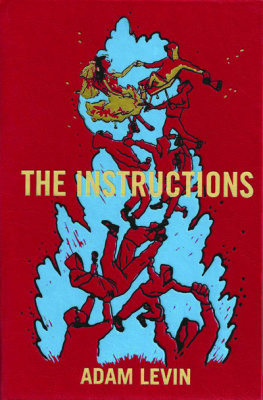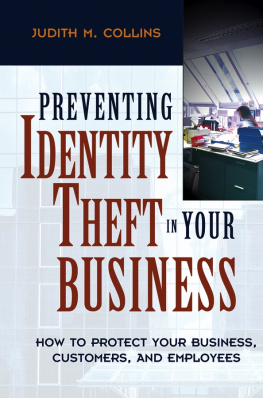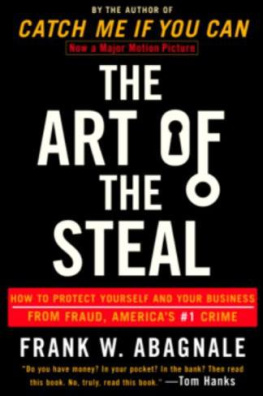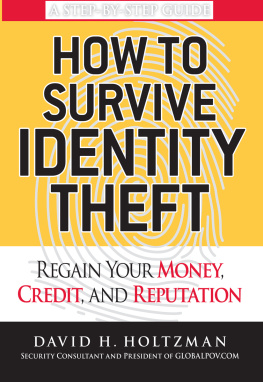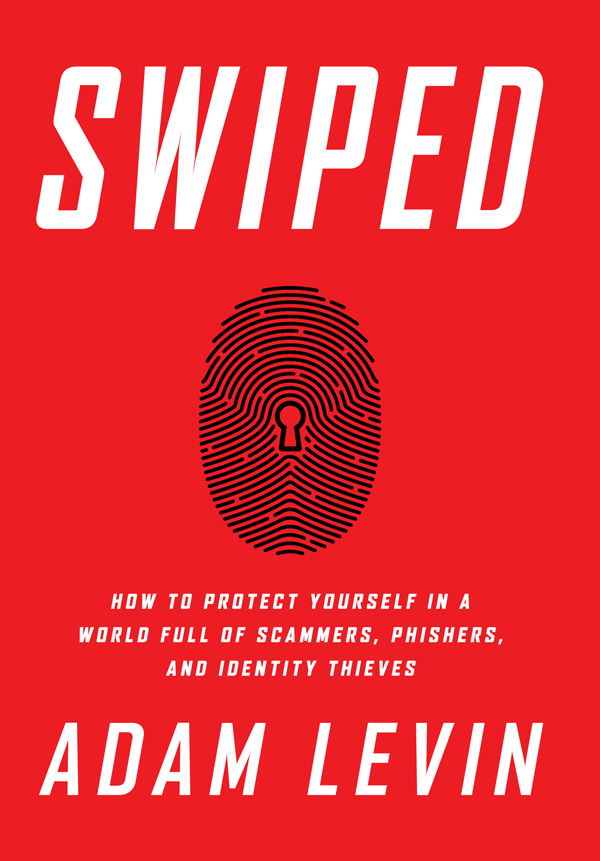Contents
Guide
SWIPED
SWIPED

How to Protect Yourself in a World Full of Scammers, Phishers, and Identity Thieves
ADAM LEVIN
with Beau Friedlander

Copyright 2015 by Adam Levin.
Published in the United States by PublicAffairs, a Member of the Perseus Books Group
All rights reserved.
Printed in the United States of America.
No part of this book may be reproduced in any manner whatsoever without written permission except in the case of brief quotations embodied in critical articles and reviews. For information, address PublicAffairs, 250 West 57th Street, 15th Floor, New York, NY 10107.
PublicAffairs books are available at special discounts for bulk purchases in the U.S. by corporations, institutions, and other organizations. For more information, please contact the Special Markets Department at the Perseus Books Group, 2300 Chestnut Street, Suite 200, Philadelphia, PA 19103, call (800) 810-4145, ext. 5000, or e-mail special.markets@perseusbooks.com.
Book design by Milenda Nan Ok Lee
Library of Congress Control Number: 2015912904
ISBN 978-1-61039-587-8 (HC)
ISBN 978-1-61039-588-5 (EB)
First Edition
10 9 8 7 6 5 4 3 2 1
To Heather and Jayger Wilde
Contents
I was just doing it to tease her, basically.
It was a harmless tweet. A girl named Brooklyn from Prosper, Texas, sent a picture to her friend Alanna in reply to one of many tweets about a cute boy Alanna had seen while shopping at a big-box store in nearby Frisco. Then something fundamentally unknowable happened: the mysterious Internet phenomenon of going viral.
Viruses reproduce by sending their DNA into a host cell, leaving the infected host, now itself a virus, to find another host cell for further reproduction. On the Internet, that process of cellular invasions and osmosis happens to users rather than cells, and it happens very fast. The DNA can be anythinga hilarious video or an unexpected quip harnessed to a snapshot. On November 2, 2014, the DNA was Brooklyn Reiffs week-old picture of a teenage boy named Alex Lee, tweeted as a playful fillip to her friends obsession.
How did Brooklyns sneaky shot of Alex Lee invade an entire population, replicating her friend Alanna Pages crush in one user after another?
You might call it theft. In fact, there were a lot of little robberiesand they added up. The first one happened when Brooklyn went beyond the act of stealing a glimpse of the checkout boy, and snapped his picture. The young man in question didnt pose for the picture. He had no idea that a picture had been taken. Certainly, no modeling release was signed. He was just there , doing his job.
Lesson Number One: In the world of Big Data, with mobile, Internet-connected cameras in every pocket, we are always just a few clicks away from being everywhere. The young man whose picture went viral got a real-life taste of that fact when his total lack of privacy became apparent; he became an Internet sensation by doing nothing but bagging products at the checkout counter.
More than 500 million photographs are uploaded to major websites every day. More than 2 billion pictures are taken on mobile devices every day. Factor in webcams and other surveillance devices, and the chances that your image isnt somewhere on the Internet are right up there with becoming the next Dalai Lama.
Alex Lee experienced one of these countless daily intrusions that happen in our social mediaobsessed society. He won the jackpot in the privacy is on life support sweepstakes. It didnt matter that he was tending to his own business. His existence created the potential for a transactionone that required neither his consent nor his participation. The snapping of his picture underscored a simple reality: If youre out in the world, the world can look at you. And if the world has a smartphone, it can snap, store, share, and reshare you, all in just a few taps, each one a little theft of your face, your identity, your self.
In this particular instance, someone grabbed Brooklyns snapshot from her Twitter account and put it on another social networking site, Tumblr. Brooklyn had no idea. Meanwhile, the picture started replicating on Twitter accounts. While the complexity of the pictures distribution was at least potentially knowable, it was in no way controllable. The million little thefts that made Alex Lee famous are metaphorical. No court of law would rule that Brooklyns actions, or any of the actions of other people who retweeted her photo, rise to the level of theft. But, well, you get the pictureas did millions of people around the world.
Needless to say, Alex Lee had no idea any of this was happening. He hadnt done anything wrong or unusual. There were no regrettable posts, no questionable sites visited, no malware behind it all. His phone wasnt even powered on when the month-long distribution of his image reached critical mass the following Sunday sometime during the Cowboys-Packers game. It was right after that game that Brooklyn first noticed something was afoot on Twitter. She started getting mentioned in posts even though she didnt have very many followers. Her surreptitious shot of Alannas crush with the waterfall of Justin Bieber hair was getting love from people she didnt know. Among those taking a shine to the checkout boy was a teenager in the UK who had liberated the picture of Alex from a Tumblr user, who had pinched it from Brooklyns original reply tweet to her friend Alanna. The British girls tweet was simple: YOOOOOOOOOO.
Desirable information goes wherever its wanted.
A long line formed at Alex Lees checkout station. It was filled with giggling girls. The reason Alex had turned off his phone was the banal stuff of disorganized people everywhereno charger, low battery, and needing to get in touch with his parents when his shift was over so they could come pick him up. It was his managera senior in high schoolwho told him what was going on, showing him the picture that had started to go viral. By the time he turned on his phone in the front seat of his mothers Mercedes at the end of his shift, he had more than 100,000 followers, virtually all of whom were new that day. That number would triple before the end of the twenty-four-hour clickstorm set off by the Twitter user named @_twerkcam, who retweeted the YOOOOOOOOOO tweet with the hashtag that launched a million mentions#AlexFromTarget. Brooklyn Reiffs picture had gone viral.
Alexs first tweet was a bit disingenuous. Am I famous now? he wrote. That of course got retweeted 42,000 times and was favorited by more than 86,000 users. The hashtag became a trending topic, and talk show host Ellen DeGeneres used it, tweeting, Hey #AlexFromTarget, its #EllenFromEllen.
Something else happened, too. According to the New York Times , Alex Lee received death threats against him and his family. He had to change his phone number because someone had leaked itor his phone was hacked. The device failed, unable to keep up with all the texts that came streaming in.
YOOOOOOOOOO. There is no such thing as harmless personal information.
These last details of the #AlexFromTarget story got precisely one buried paragraph in the Times. Regardless, though, they highlight the nature of the identity theft problem.




